Nippon Suiseki Meihinten 2014 (54th)- photos by Jeff Amas
+2
David Brunner
Chris Cochrane
6 posters
Page 1 of 1
 Nippon Suiseki Meihinten 2014 (54th)- photos by Jeff Amas
Nippon Suiseki Meihinten 2014 (54th)- photos by Jeff Amas
Tokyo resident Jeff Amas (a New Zealand friend) shares the following illustrations (including 47 stones) of the recent 54th Nippon Suiseki Meihinten at the Meiji Shrine in Tokyo. Jeff found the backgrounds in several instances too distracting, so he photo-edited the background for each. Thanks for your thoughtfulness, Jeff!
Photos of the exhibit space are also coming, but I've not received them, yet. You can get an idea by looking at previous Meihinten posts on the IBC Stone Forum. There are also very good illustrated articles by "Wil from Japan" in back issues of California Aiseki Kai online newsletters.
Beginning with stones from the indoor exhibition area:
1.
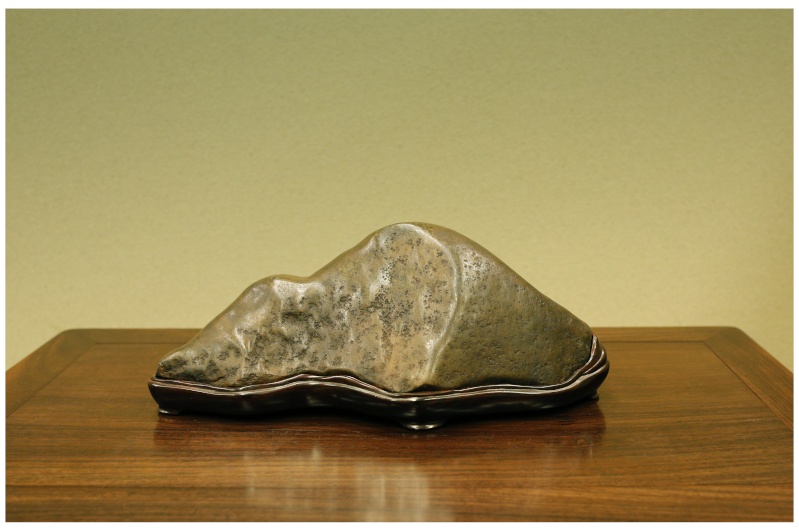
2.

3.

4.

5.
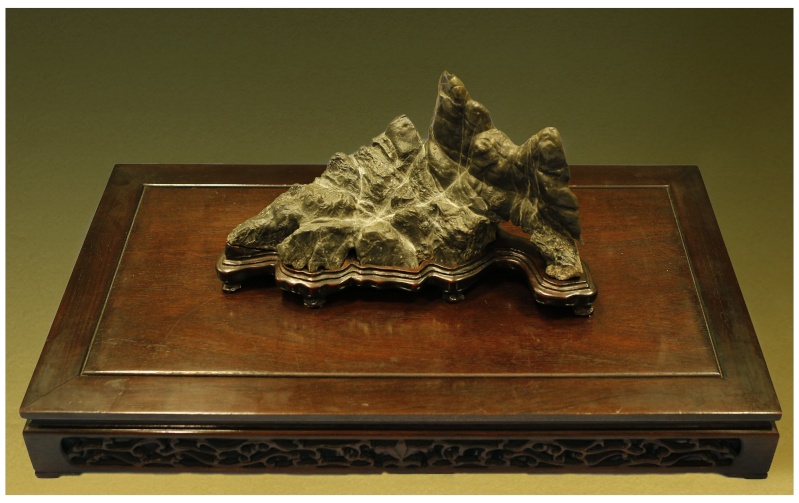
Photos of the exhibit space are also coming, but I've not received them, yet. You can get an idea by looking at previous Meihinten posts on the IBC Stone Forum. There are also very good illustrated articles by "Wil from Japan" in back issues of California Aiseki Kai online newsletters.
Beginning with stones from the indoor exhibition area:
1.

2.

3.

4.

5.

Last edited by Chris Cochrane on Tue Jul 01, 2014 2:14 pm; edited 5 times in total (Reason for editing : changed # of stones illustrated to 47)

Chris Cochrane- Member
 Re: Nippon Suiseki Meihinten 2014 (54th)- photos by Jeff Amas
Re: Nippon Suiseki Meihinten 2014 (54th)- photos by Jeff Amas
Continuing with stones from the indoor exhibition area...
6.

7.

8.
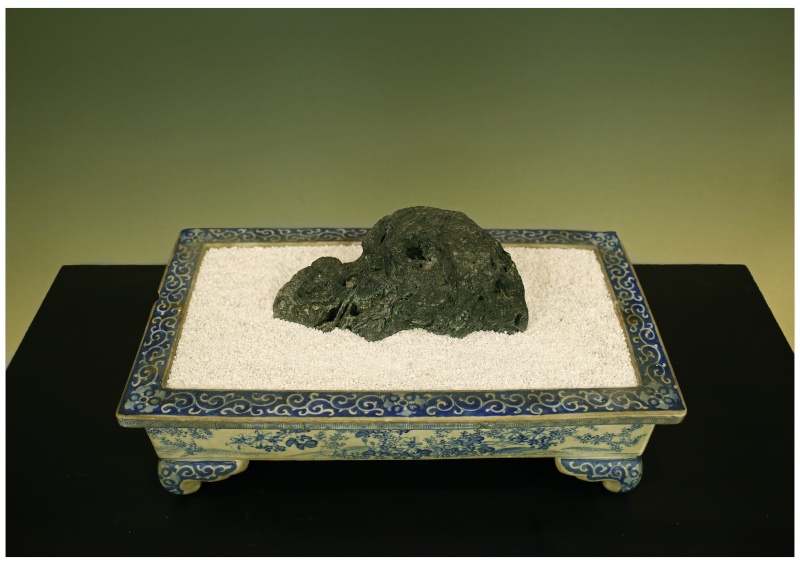
9.
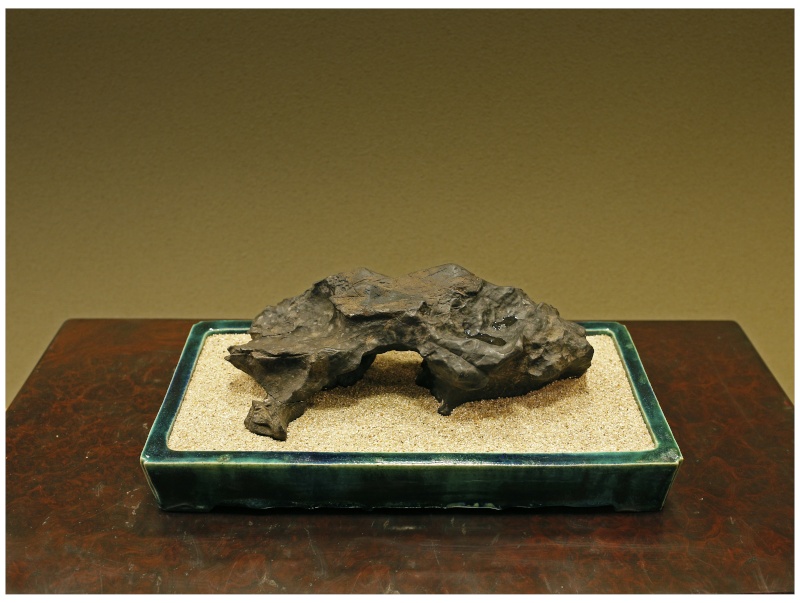
10.

6.

7.

8.

9.

10.

Last edited by Chris Cochrane on Mon Jun 30, 2014 12:50 am; edited 1 time in total

Chris Cochrane- Member
 Re: Nippon Suiseki Meihinten 2014 (54th)- photos by Jeff Amas
Re: Nippon Suiseki Meihinten 2014 (54th)- photos by Jeff Amas
More stones exhibited indoors...
11.

12.

13.

14.

15.
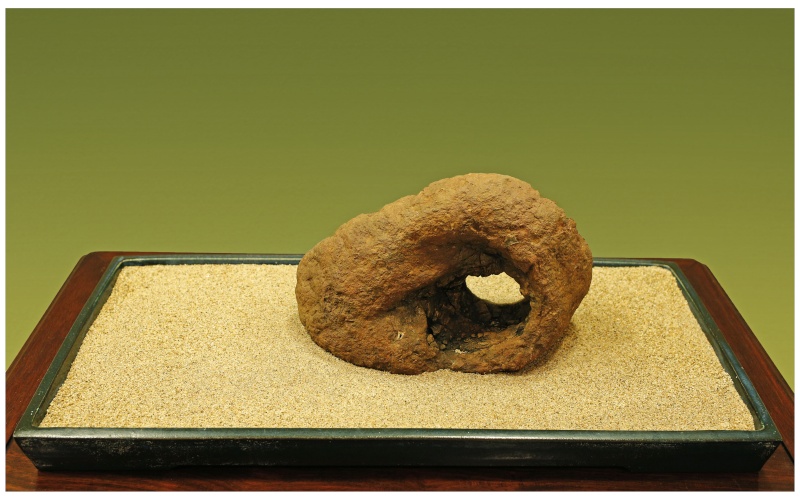
16.
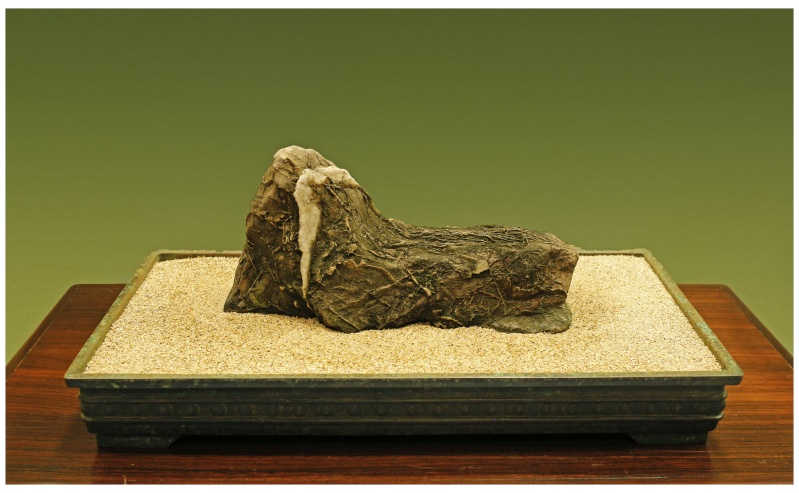
17.
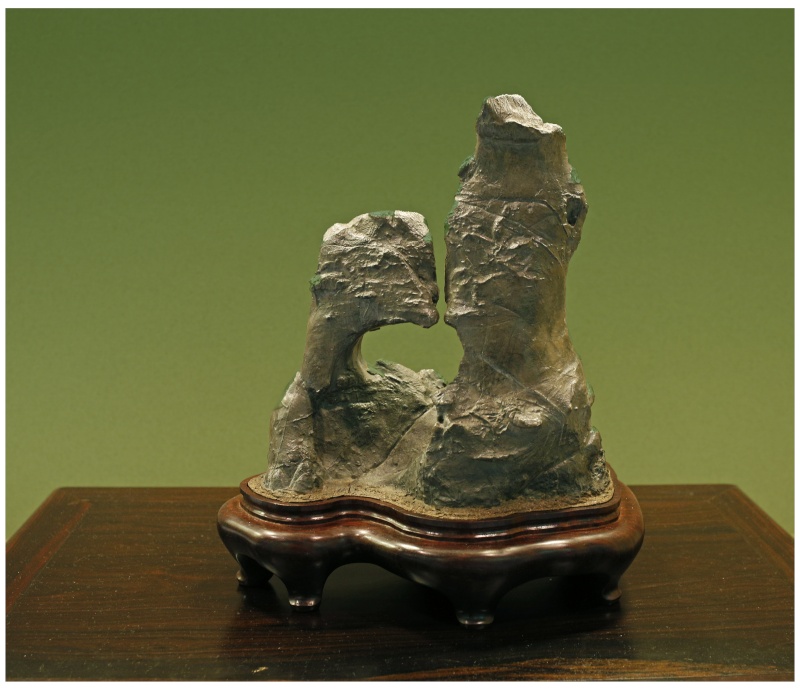
18.

11.

12.

13.

14.

15.

16.

17.

18.


Chris Cochrane- Member
 Re: Nippon Suiseki Meihinten 2014 (54th)- photos by Jeff Amas
Re: Nippon Suiseki Meihinten 2014 (54th)- photos by Jeff Amas
Continuing indoors...
19. Jeff notes the suiban is actually arched-- it is not a photo illusion...

20.

21.
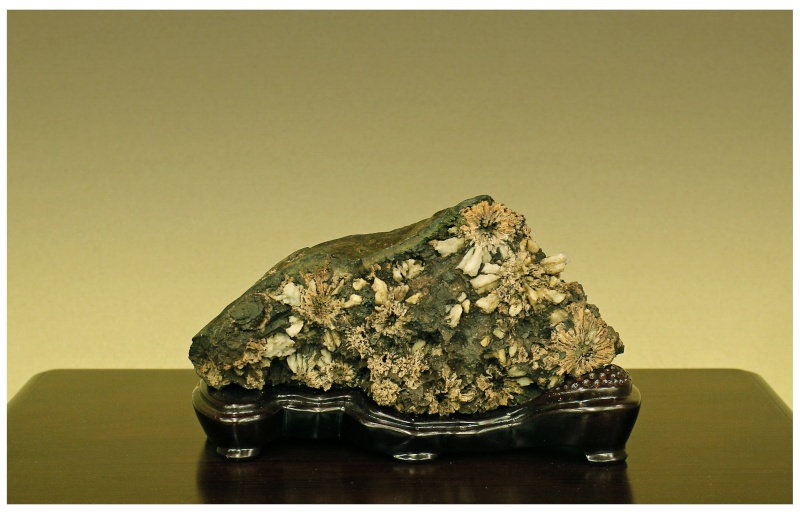
22.
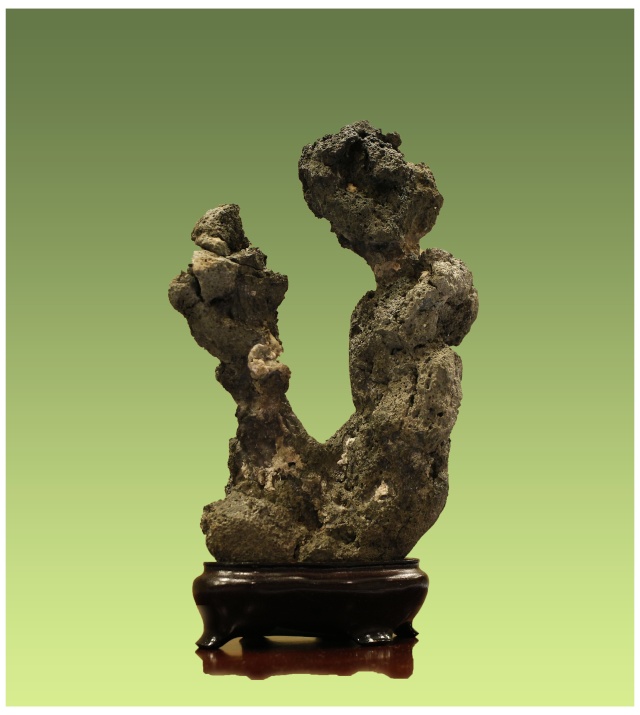
23.
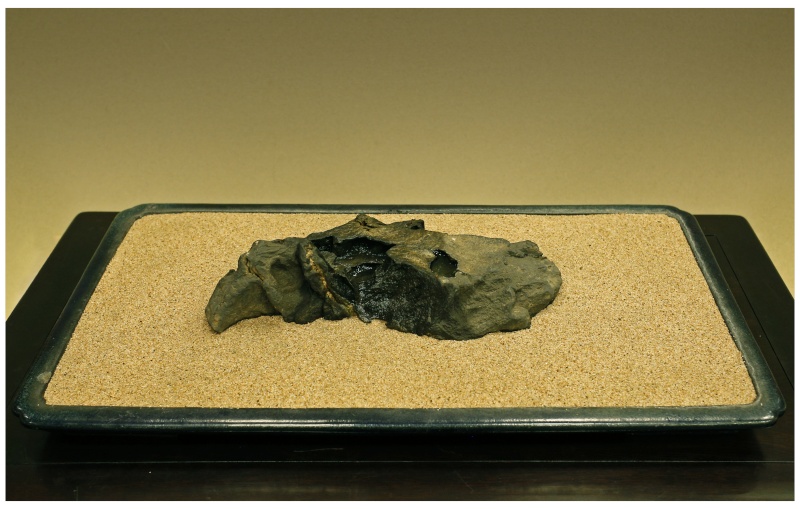
24.
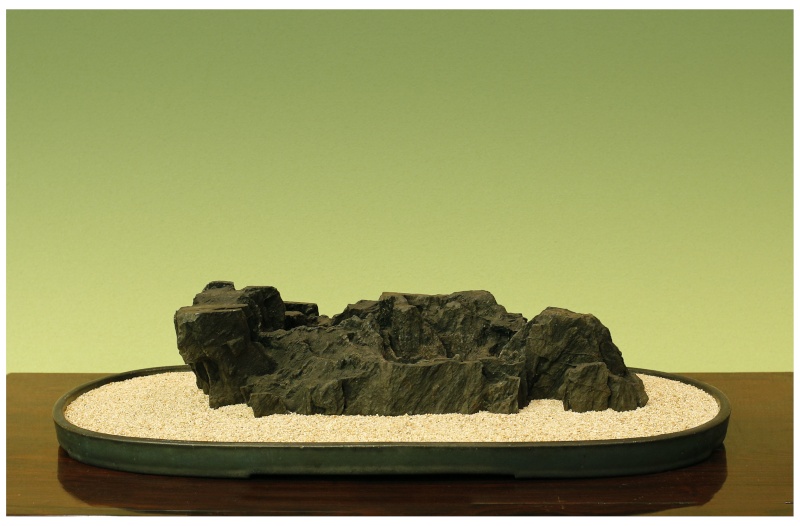
25.

19. Jeff notes the suiban is actually arched-- it is not a photo illusion...

20.

21.

22.

23.

24.

25.


Chris Cochrane- Member
 Re: Nippon Suiseki Meihinten 2014 (54th)- photos by Jeff Amas
Re: Nippon Suiseki Meihinten 2014 (54th)- photos by Jeff Amas
More of the indoor exhibition...
26.
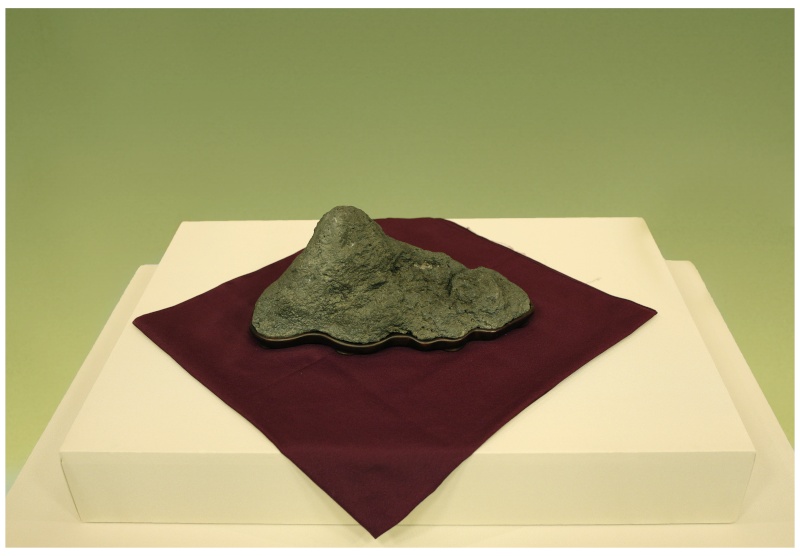
27.

28.
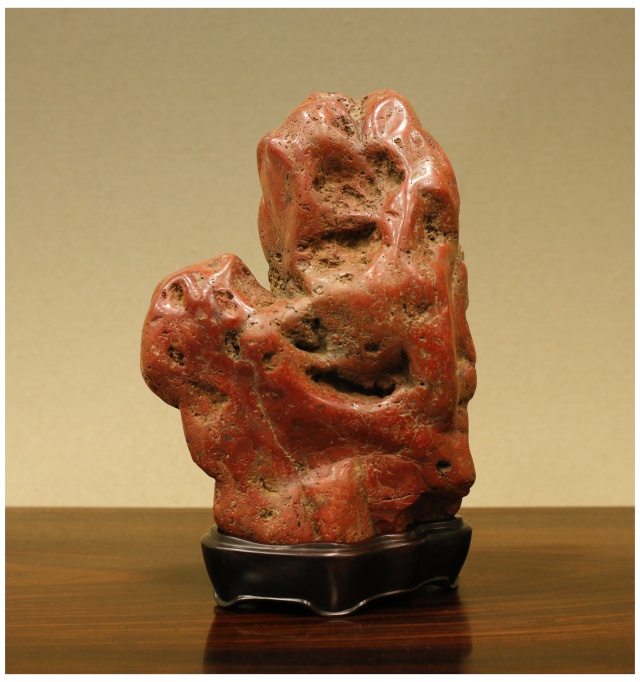
29.
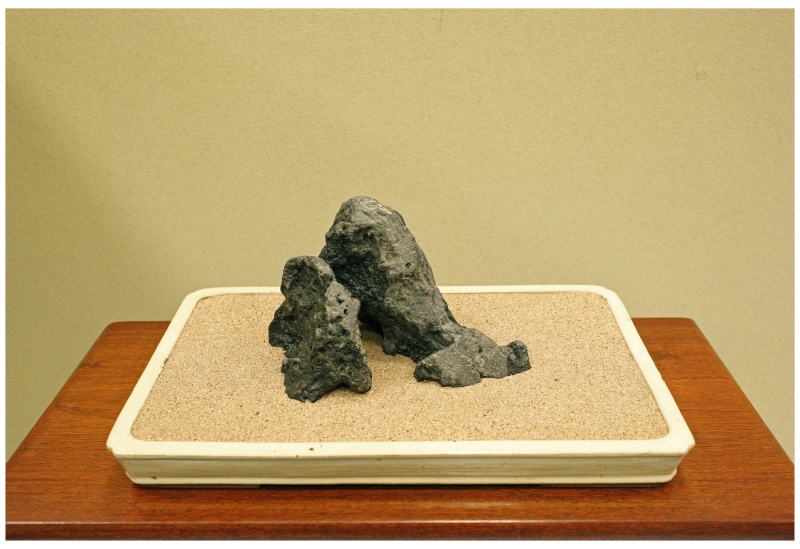
30.

31.
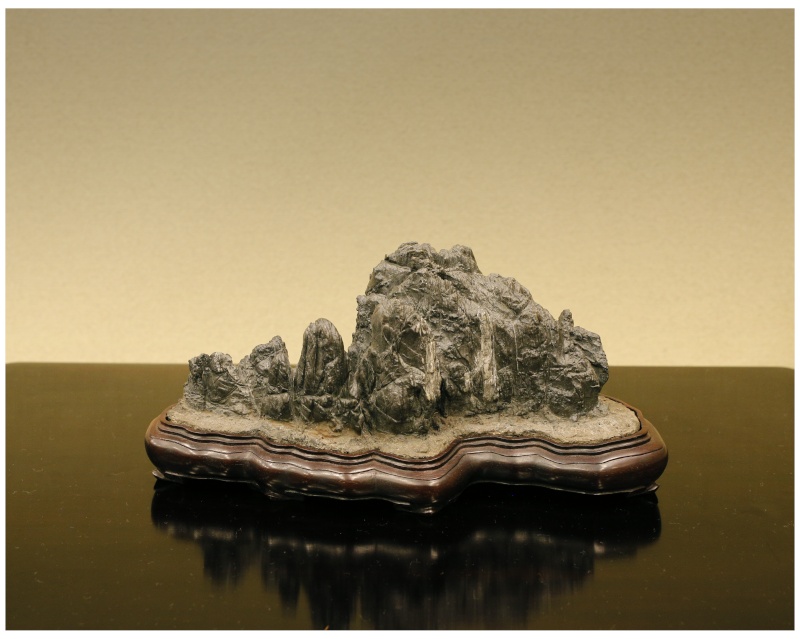
32.

33. Jeff's friend Miki recommended a particular background to give stone #33 "a more nihon-poi feeling." I think it roughly translates as "a more Japan-like feeling." The background color on my screen appears more-blue/less-'greenish beige' than "Rikyu nezumi/'mouse' gray," which is ambiguous in the extreme. Nicely chosen!

34.

35.
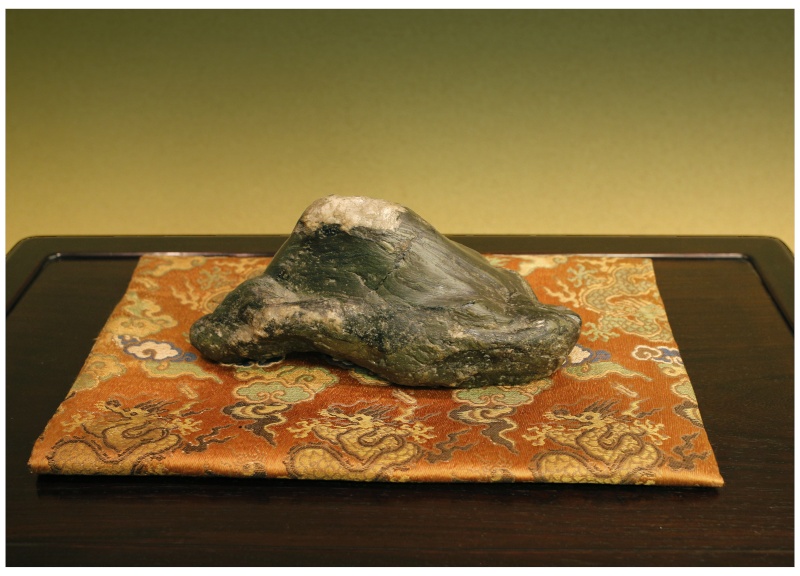
36.

37.
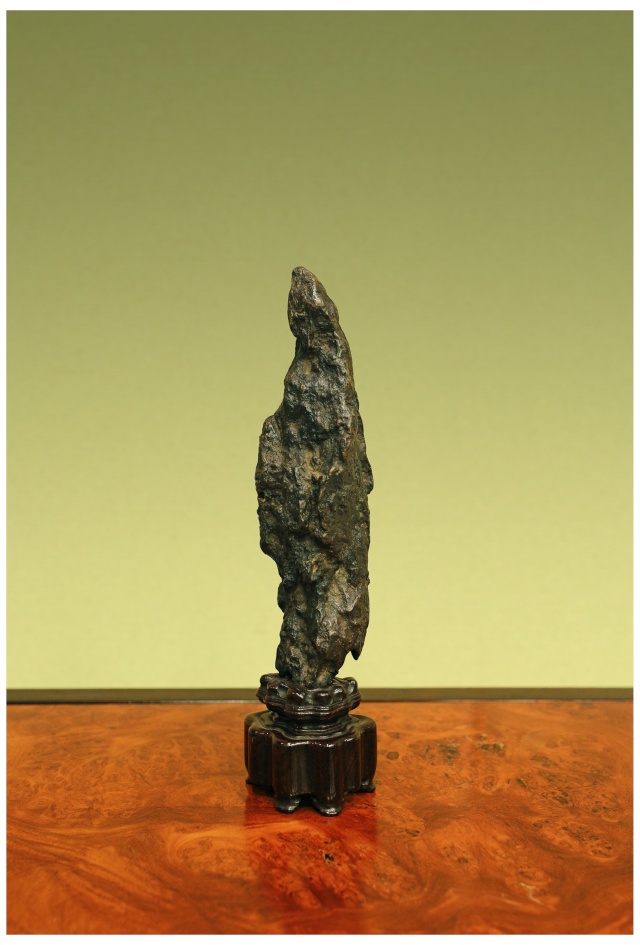
26.

27.

28.

29.

30.

31.

32.

33. Jeff's friend Miki recommended a particular background to give stone #33 "a more nihon-poi feeling." I think it roughly translates as "a more Japan-like feeling." The background color on my screen appears more-blue/less-'greenish beige' than "Rikyu nezumi/'mouse' gray," which is ambiguous in the extreme. Nicely chosen!

34.

35.

36.

37.

Last edited by Chris Cochrane on Thu Jul 03, 2014 5:36 pm; edited 1 time in total (Reason for editing : 5 stones added (#33 - 37))

Chris Cochrane- Member
 Re: Nippon Suiseki Meihinten 2014 (54th)- photos by Jeff Amas
Re: Nippon Suiseki Meihinten 2014 (54th)- photos by Jeff Amas
Stones in the outside Meiji Shrine exhibition...
Outdoor #1.
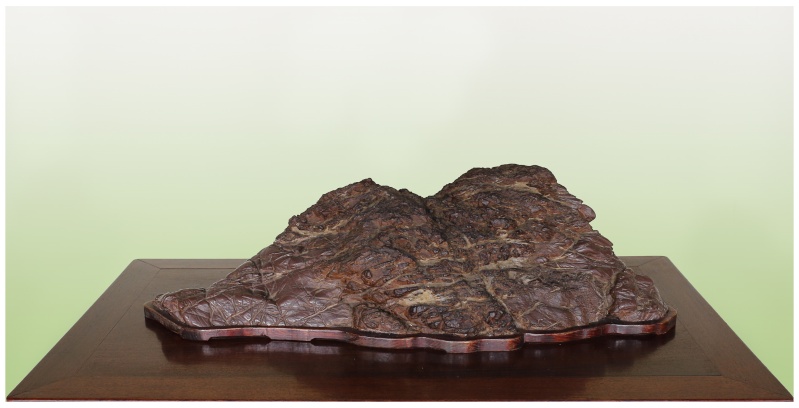
Outdoor #2.
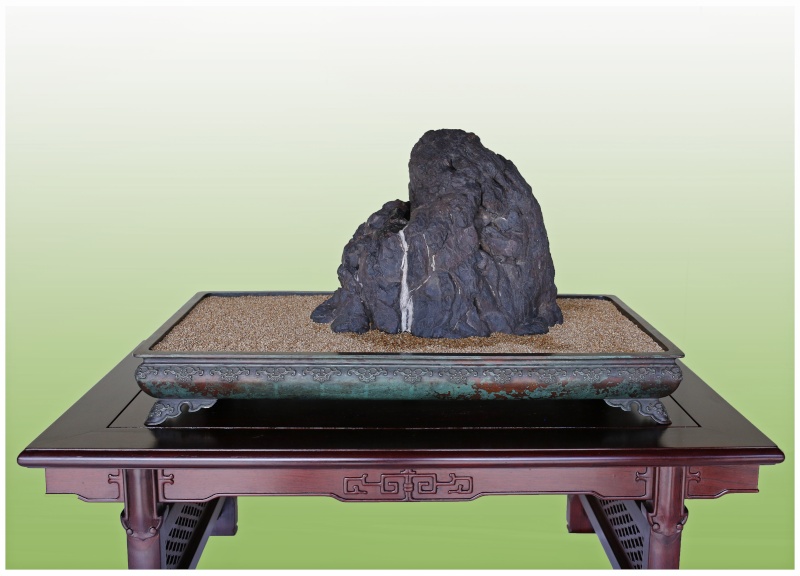
Outdoor #3.

Outdoor #4.

Outdoor #5.
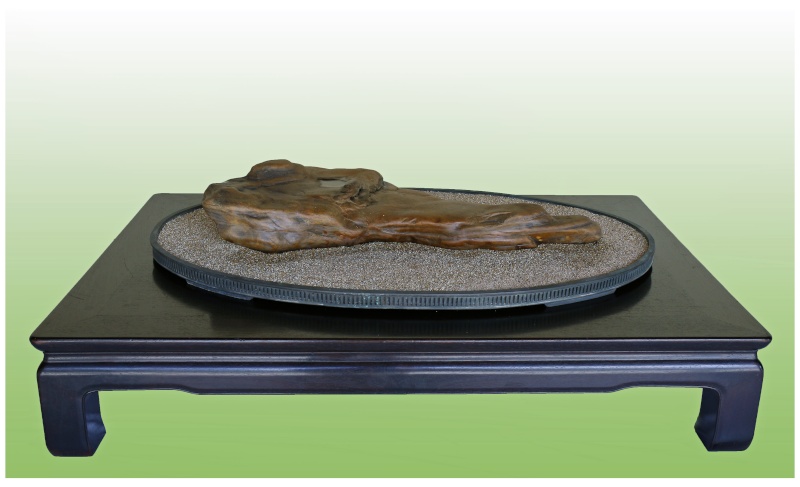
Outdoor #6.
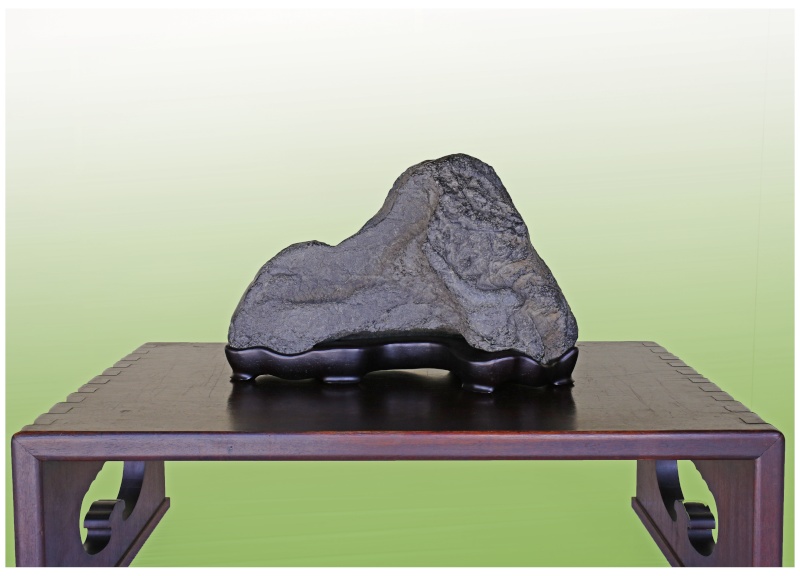
Outdoor #7.

Outdoor #8.

Outdoor #9.

Outdoor #10.
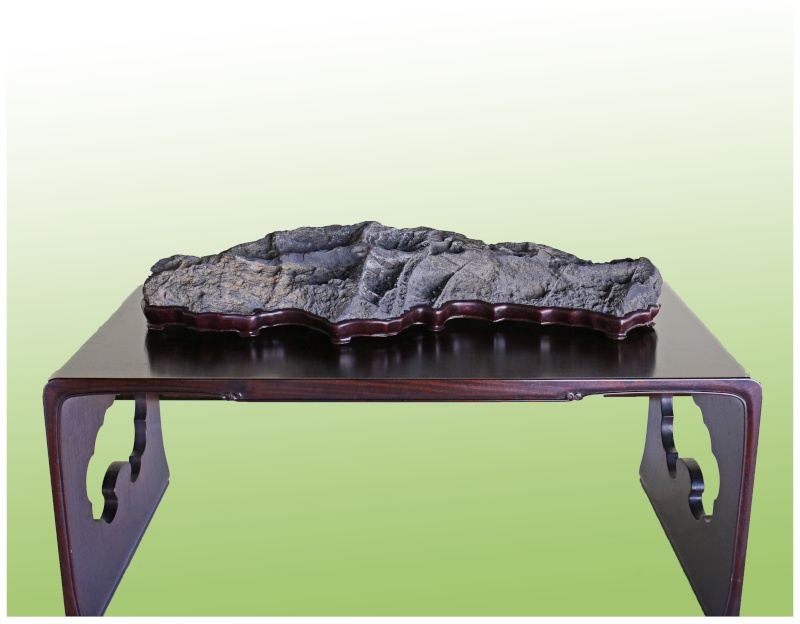
..... END OF INDIVIDUAL STONE PHOTOS .....
Outdoor #1.

Outdoor #2.

Outdoor #3.

Outdoor #4.

Outdoor #5.

Outdoor #6.

Outdoor #7.

Outdoor #8.

Outdoor #9.

Outdoor #10.

..... END OF INDIVIDUAL STONE PHOTOS .....

Chris Cochrane- Member
 Re: Nippon Suiseki Meihinten 2014 (54th)- photos by Jeff Amas
Re: Nippon Suiseki Meihinten 2014 (54th)- photos by Jeff Amas
Wow Chris – these are so cool!
I really like #4, #17, and “outdoor #8”.
I see that some are displayed in suiban and others in carved seats. I understand that this is a very naïve question – but why? I have looked over the various pictures several times to tried to form my own opinion – Object vs Landscape; Close focus vs Far; Ornament vs Object – but I cannot. Forgive me for being dim! But I would like to understand.
Here is what I see and feel (naïve and certainly wrong): those in carved seats have a formal almost iconic feeling – shall I say they seem like objects of veneration; while those suiban have a feeling of observation, not icons but impressionistic motifs.
Don’t be kind! Tell me the cruel truth of my naiveté! Hence I might shed ignorance…
Yours fondly!
David B.
I really like #4, #17, and “outdoor #8”.
I see that some are displayed in suiban and others in carved seats. I understand that this is a very naïve question – but why? I have looked over the various pictures several times to tried to form my own opinion – Object vs Landscape; Close focus vs Far; Ornament vs Object – but I cannot. Forgive me for being dim! But I would like to understand.
Here is what I see and feel (naïve and certainly wrong): those in carved seats have a formal almost iconic feeling – shall I say they seem like objects of veneration; while those suiban have a feeling of observation, not icons but impressionistic motifs.
Don’t be kind! Tell me the cruel truth of my naiveté! Hence I might shed ignorance…
Yours fondly!
David B.
David Brunner- Member
 Re: Nippon Suiseki Meihinten 2014 (54th)- photos by Jeff Amas
Re: Nippon Suiseki Meihinten 2014 (54th)- photos by Jeff Amas
Hi Chris, I very much like all the stones you have post here! In particular I enjoy the most #21 and # 1
Thanks you Chris.
Young
Thanks you Chris.
Young
Young Doan- Member
 Re: Nippon Suiseki Meihinten 2014 (54th)- photos by Jeff Amas
Re: Nippon Suiseki Meihinten 2014 (54th)- photos by Jeff Amas
I too like # 21 with what appears to be fossils of Crinoids and a few molluscs in it.

JimLewis- Member
 Re: Nippon Suiseki Meihinten 2014 (54th)- photos by Jeff Amas
Re: Nippon Suiseki Meihinten 2014 (54th)- photos by Jeff Amas
Hi Dick... The questions that you pose intrigue me, as well: (you ask: "Object vs Landscape; Close focus vs Far; Ornament vs Object"). Enthusiasts study these together and openness serves us well.
The "outside exhibition" suiseki in suiban have been saturated with water along with the sand in their suiban, and Jeff has caught them in the process of drying (very nice!). For me, these drying suiseki offer the height of appreciation-- especially for a intimate (alcove) display. I also hear (second-hand) that Mr. Morimae believes an accessory plant should only accompany a suiseki in a suiban, which is consistent with illustrations of suiseki in Ichiu Katayama (e.g., green book) & NSA publications. As you noted in another IBC thread recently, the companion plant on its board is typically of less height than the height of the stand for the primary bonsai or suiseki in display-- with the possible exception of one bloom (text source: Willi Benz & confirmed in many Japanese publications). You know that only landscape-view suiseki (which include the objects "plain boat" & "thatched hut") are typically appropriate for suiban mounting. Thatched hut stones are typically placed in suiban filled with moss (or short grass) planting.
For a landscape-view stone in a suiban, I consider a connection with water. Therefore, they are easily imagined as waterfall, water pool, island (especially as opposed to 'terrestrial mountain/mountain range'), coastal rock (especially as opposed to a terrestrial landscape 'massive rock'), headland, boat stones, archways-in- water, cascading terrace et al.. These stones should not be intentionally hand-rubbed (or otherwise oiled) as the slow evaporation of water (over hours) across their surface will be compromised.
Very hard, dense landscape-view stones that are not associated with water can be hand-rubbed, but the hand-rubbing will preclude their being appropriate for suiban display. Display in a daiza is not lesser display; instead, it is closer to privileging formality in mounting over informal naturalness.
Object stones in Japanese stone appreciation are typically mounted on daiza (though "plain boat" & "thatched hut" stones can also be placed in suiban).
Pattern stones are typically mounted on daiza though they can be mounted in suiban if the contour strongly suggests a landscape view.
This is my impression on "object vs. landscape," but as you are aware, "Feeling always is more important than technique." In Keido lessons, Susumo Sudo would never instruct a student directly. He only became animated in conversation where direct-experience/feeling/tone/atmosphere was conveyed as opposed to correctness of practice. Trusting the host's intention contributes to the guest's reception.
Re' "close vs. far focus," choice of suiban size affects reception. Accompanying choice and arrangement objects in display also affects reception. Smooth stones with indistinct texture suggest a more distant landscape view than stones with highly-detailed texture. Some stones will include a feature so distinctive that the viewer is immediately drawn to consideration of the landscape at a particular distance. Coastal rocks will typically appear near while headland, slope/plateau & mountain range rocks will typically appear distant. Some stones will suggest a near-foreground & distant-background-- e.g., a water-pool "lake" stone with mountain' horizon rising behind it.
Comparing "ornament vs. object," I am somewhat flummoxed. They arguably operate on separate scales.
Libraries classify books on suiseki as well as Chinese scholar rocks as "Ornamental Rocks." Ornament/decoration in most contexts suggests the "gilding of the lilly" where comeliness is enhanced rather than depth-of-feeling plumbed-- attractiveness is the object of ornament as opposed to a functional or fine art purpose. While a collection of stones may be decorative, suiseki is among the least decorative in requiring recollection of an object in nature that projects feeling. Object-shaped stones in suiseki include full-body forms of zoomorphic (e.g., animal, bird, insect, fish), constructed building, boat and bridge (et al.?) resemblance. Human-shape object stones are typically reserved for recalling a spiritually-elevated full-figure. Suiseki in the context of Japanese appreciation is seldom limited to ornament for an engaged enthusiast.
The "outside exhibition" suiseki in suiban have been saturated with water along with the sand in their suiban, and Jeff has caught them in the process of drying (very nice!). For me, these drying suiseki offer the height of appreciation-- especially for a intimate (alcove) display. I also hear (second-hand) that Mr. Morimae believes an accessory plant should only accompany a suiseki in a suiban, which is consistent with illustrations of suiseki in Ichiu Katayama (e.g., green book) & NSA publications. As you noted in another IBC thread recently, the companion plant on its board is typically of less height than the height of the stand for the primary bonsai or suiseki in display-- with the possible exception of one bloom (text source: Willi Benz & confirmed in many Japanese publications). You know that only landscape-view suiseki (which include the objects "plain boat" & "thatched hut") are typically appropriate for suiban mounting. Thatched hut stones are typically placed in suiban filled with moss (or short grass) planting.
For a landscape-view stone in a suiban, I consider a connection with water. Therefore, they are easily imagined as waterfall, water pool, island (especially as opposed to 'terrestrial mountain/mountain range'), coastal rock (especially as opposed to a terrestrial landscape 'massive rock'), headland, boat stones, archways-in- water, cascading terrace et al.. These stones should not be intentionally hand-rubbed (or otherwise oiled) as the slow evaporation of water (over hours) across their surface will be compromised.
Very hard, dense landscape-view stones that are not associated with water can be hand-rubbed, but the hand-rubbing will preclude their being appropriate for suiban display. Display in a daiza is not lesser display; instead, it is closer to privileging formality in mounting over informal naturalness.
Object stones in Japanese stone appreciation are typically mounted on daiza (though "plain boat" & "thatched hut" stones can also be placed in suiban).
Pattern stones are typically mounted on daiza though they can be mounted in suiban if the contour strongly suggests a landscape view.
This is my impression on "object vs. landscape," but as you are aware, "Feeling always is more important than technique." In Keido lessons, Susumo Sudo would never instruct a student directly. He only became animated in conversation where direct-experience/feeling/tone/atmosphere was conveyed as opposed to correctness of practice. Trusting the host's intention contributes to the guest's reception.
Re' "close vs. far focus," choice of suiban size affects reception. Accompanying choice and arrangement objects in display also affects reception. Smooth stones with indistinct texture suggest a more distant landscape view than stones with highly-detailed texture. Some stones will include a feature so distinctive that the viewer is immediately drawn to consideration of the landscape at a particular distance. Coastal rocks will typically appear near while headland, slope/plateau & mountain range rocks will typically appear distant. Some stones will suggest a near-foreground & distant-background-- e.g., a water-pool "lake" stone with mountain' horizon rising behind it.
Comparing "ornament vs. object," I am somewhat flummoxed. They arguably operate on separate scales.
Libraries classify books on suiseki as well as Chinese scholar rocks as "Ornamental Rocks." Ornament/decoration in most contexts suggests the "gilding of the lilly" where comeliness is enhanced rather than depth-of-feeling plumbed-- attractiveness is the object of ornament as opposed to a functional or fine art purpose. While a collection of stones may be decorative, suiseki is among the least decorative in requiring recollection of an object in nature that projects feeling. Object-shaped stones in suiseki include full-body forms of zoomorphic (e.g., animal, bird, insect, fish), constructed building, boat and bridge (et al.?) resemblance. Human-shape object stones are typically reserved for recalling a spiritually-elevated full-figure. Suiseki in the context of Japanese appreciation is seldom limited to ornament for an engaged enthusiast.

Chris Cochrane- Member
 Re: Nippon Suiseki Meihinten 2014 (54th)- photos by Jeff Amas
Re: Nippon Suiseki Meihinten 2014 (54th)- photos by Jeff Amas
Hello Chris Cochrane ,
Many thanks for your share useful for me .
Sincerely ,
Hưng - Trần .
Many thanks for your share useful for me .
Sincerely ,
Hưng - Trần .
trantanhung_nt- Member
 Re: Nippon Suiseki Meihinten 2014 (54th)- photos by Jeff Amas
Re: Nippon Suiseki Meihinten 2014 (54th)- photos by Jeff Amas
Entrances (as in previous years) to this year's Nippon Suiseki Meihinten:
Meiji Shrine torii gate inviting pedestrians to a long, broad entrance walkway:

Meiji Shrine main building:
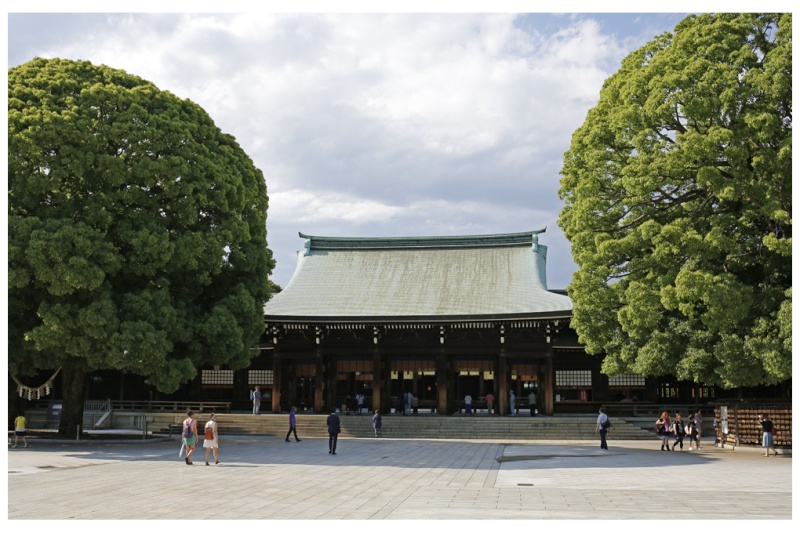
Meiji Shrine outdoor suiseki exhibition site:

Meiji Shrine indoor suiseki exhibition hall:
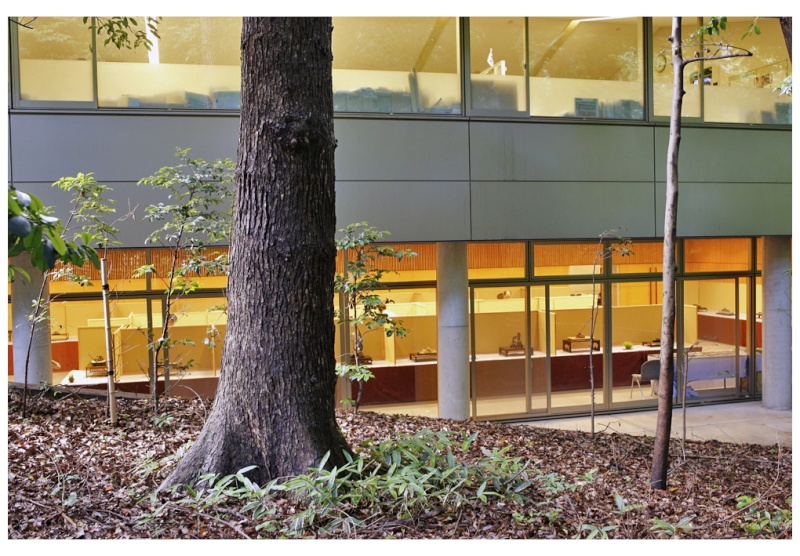
Meiji Shrine torii gate inviting pedestrians to a long, broad entrance walkway:

Meiji Shrine main building:

Meiji Shrine outdoor suiseki exhibition site:

Meiji Shrine indoor suiseki exhibition hall:


Chris Cochrane- Member
 Re: Nippon Suiseki Meihinten 2014 (54th)- photos by Jeff Amas
Re: Nippon Suiseki Meihinten 2014 (54th)- photos by Jeff Amas
Several of the suiseki exhibition's individual display (complementary) or exhibition (accent) plants:
Plant #1:
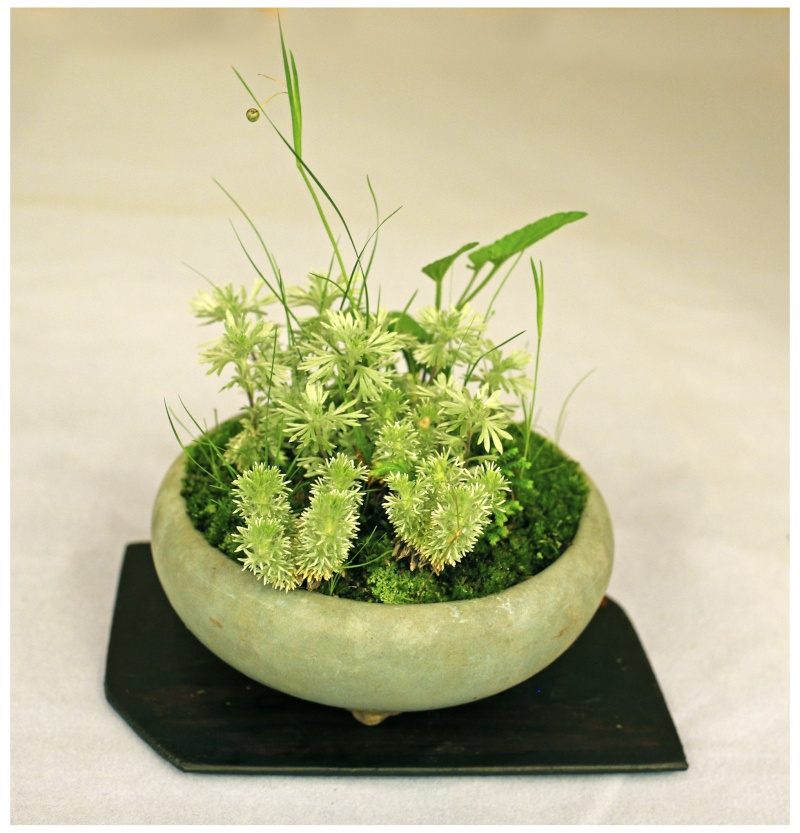
Plant #2:

Plant #3:

Plant #4:
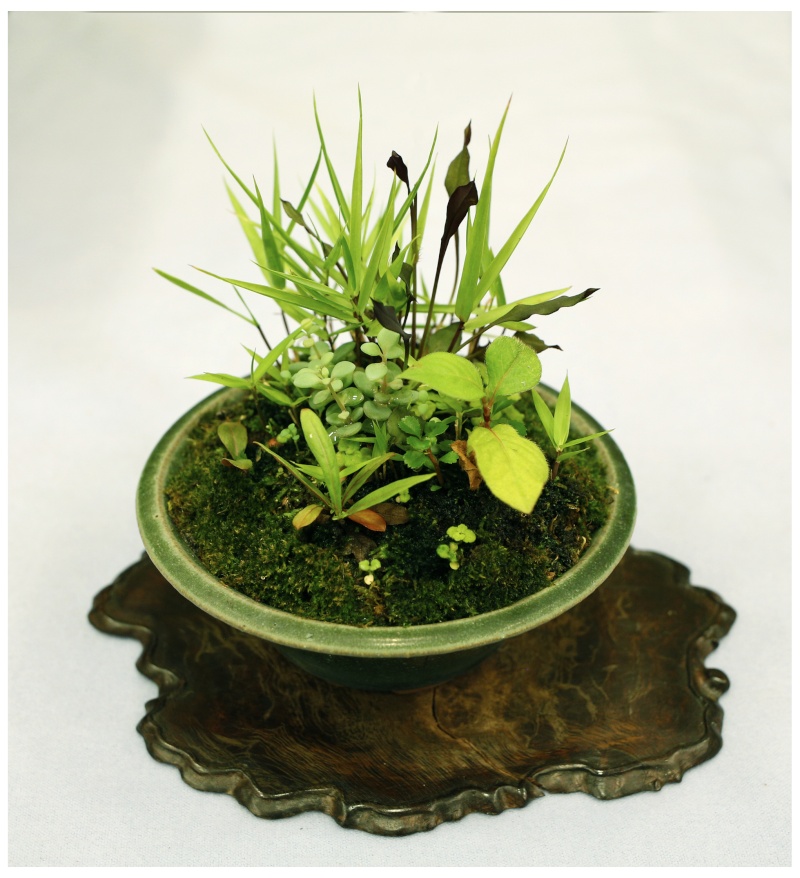
Plant #5:
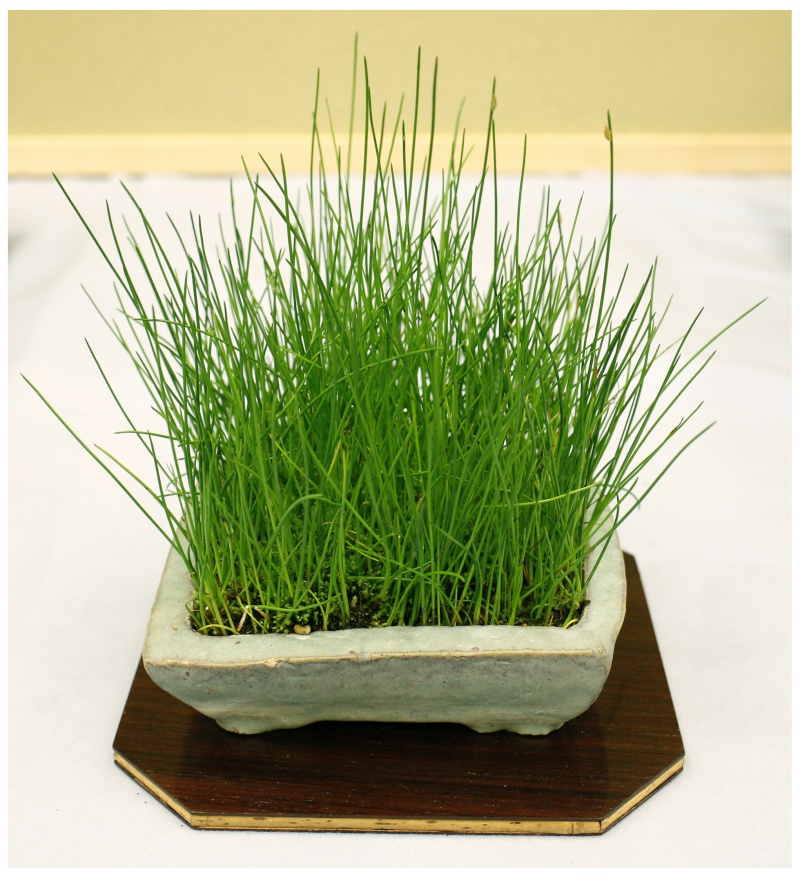
Plant #6:

Plant #7:
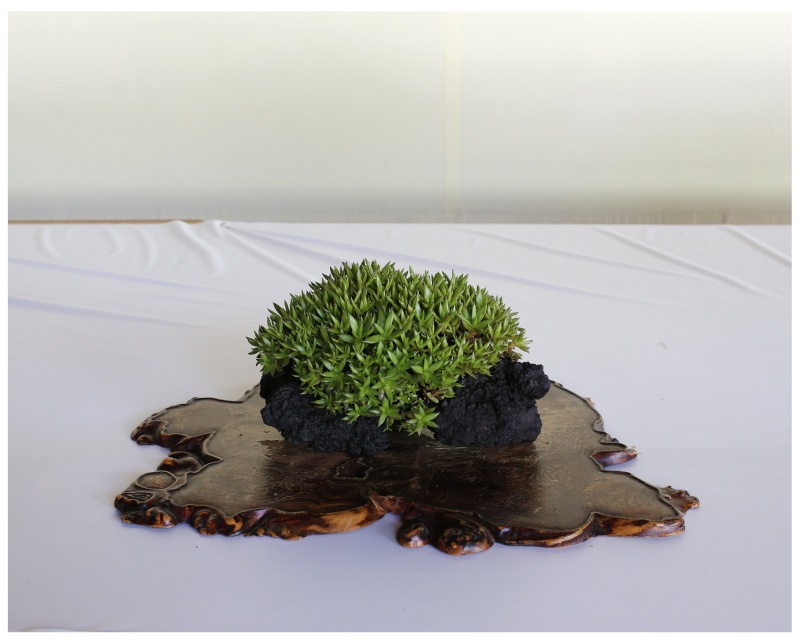
Plant #1:

Plant #2:

Plant #3:

Plant #4:

Plant #5:

Plant #6:

Plant #7:


Chris Cochrane- Member
 Re: Nippon Suiseki Meihinten 2014 (54th)- photos by Jeff Amas
Re: Nippon Suiseki Meihinten 2014 (54th)- photos by Jeff Amas
Thank you Chris,
it's always a pleasure for us that you share all this to us,it keeps our adrenaline pumping to seek better quality of stone and how we should care for it.. We are always humbled and priviledge
Your friend & best regards,
Ogie/Alex
it's always a pleasure for us that you share all this to us,it keeps our adrenaline pumping to seek better quality of stone and how we should care for it.. We are always humbled and priviledge
Your friend & best regards,
Ogie/Alex

ogie- Member
 Similar topics
Similar topics» Nippon Suiseki Meihinten 2009- photos by Jeff Amas
» Nippon Suiseki Meihinten (2013)- photos from Jeff Amas
» Nippon Suiseki Meihinten 2018 (58th)- photos by Jeff Amas
» Nippon Suiseki Meihinten 2016 (56th)- photos by Jeff Amas
» Nippon Suiseki Meihinten 2015 (55th)- photos by Jeff Amas
» Nippon Suiseki Meihinten (2013)- photos from Jeff Amas
» Nippon Suiseki Meihinten 2018 (58th)- photos by Jeff Amas
» Nippon Suiseki Meihinten 2016 (56th)- photos by Jeff Amas
» Nippon Suiseki Meihinten 2015 (55th)- photos by Jeff Amas
Page 1 of 1
Permissions in this forum:
You cannot reply to topics in this forum






